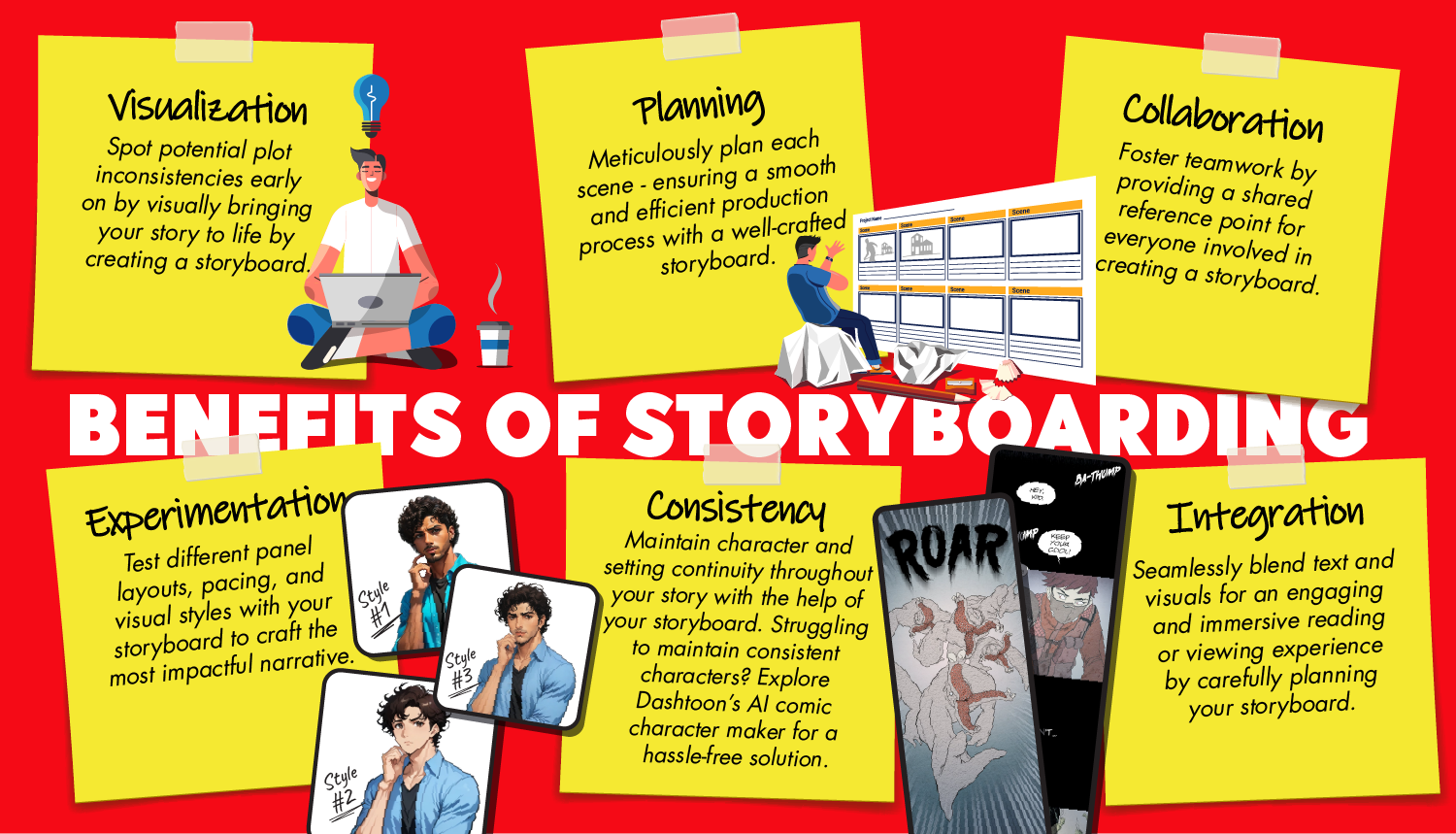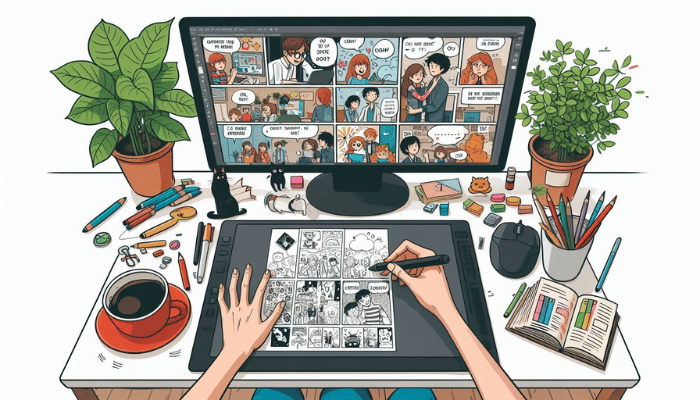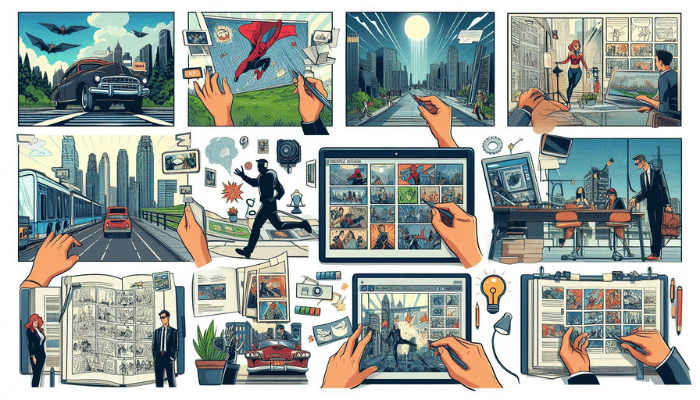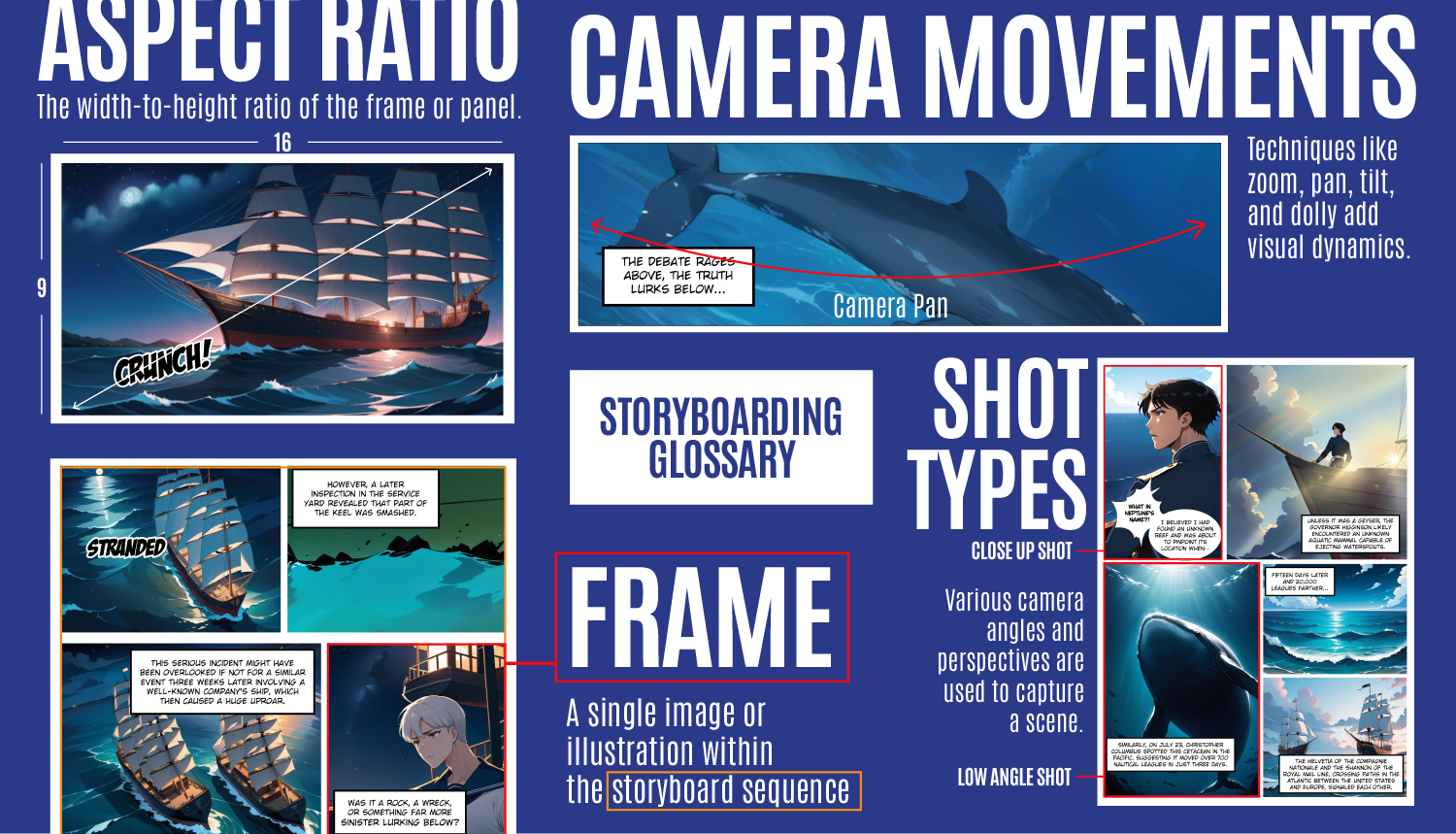How to Create A Storyboard: A Step-by-Step Guide
Beginner's guide on how to create a storyboard: master visual storytelling by transforming ideas into captivating narratives through storyboarding.

Introduction
Have you ever found yourself lost in a gripping book or movie, completely captivated by the characters and their journeys? That's the power of great storytelling - the ability to transport you to new worlds and make you feel invested. But what if you could use that power and bring your own creative visions to life?
Enter storyboarding - the secret weapon of visual storytellers. By learning how to create a storyboard, you'll gain a valuable tool for transforming your ideas into engaging narratives that hook your audience. Think of it as a visual roadmap guiding you from the initial script to the final masterpiece. Interested in learning more about the art of comic book storyboarding? Check out Dashtoon’s blog for more insights.
Whether you're an experienced creator or a fresh storyteller, mastering how to create a storyboard is the key to elevating your narratives and bringing your visions to life. So, let's dive into the whys and hows of this essential skill, shall we?
Definition and Importance of Storyboards
A storyboard is a sequence of sketches or illustrations that visually outline a story's key moments, actions, and dialogue. It's an essential technique in film, animation, and comic books - allowing creators to visualize their narratives before production begins.
Benefits of Storyboarding

- Visualization: Spot potential plot inconsistencies early on by visually bringing your story to life by creating a storyboard.
- Planning: Meticulously plan each scene - ensuring a smooth and efficient production process with a well-crafted storyboard.
- Collaboration: Foster teamwork by providing a shared reference point for everyone involved in creating a storyboard.
- Experimentation: Test different panel layouts, pacing, and visual styles with your storyboard to craft the most impactful narrative.
- Consistency: Maintain character and setting continuity throughout your story with the help of your storyboard. Struggling to maintain consistent characters? Explore Dashtoon’s AI comic character maker for a hassle-free solution.
- Integration: Seamlessly blend text and visuals for an engaging and immersive reading or viewing experience by carefully planning your storyboard.
Preparing to Create a Storyboard

Before diving into the creative process of how to create a storyboard, let's lay the groundwork for your storyboarding journey:
Identifying Key Scenes
Start by highlighting the pivotal moments and plot points in your script or story outline. These key scenes will be the driving force behind your narrative, so it's essential to capture them effectively in your storyboard.
Choosing Between Digital and Paper
Decide whether you prefer the traditional charm of pencil and paper or the convenience and flexibility of digital tools. Both approaches have their advantages:
- Paper: Cost-effective and tactile - allowing you to connect with your art in a more hands-on way.
- Digital Tools: Efficient, easily editable, and ideal for seamless collaboration with team members. Additionally, this gives you a larger audience base globally. Interested in exploring digital tools for storyboarding? Check out our AI comic generator for an intuitive solution.
Go with the option that aligns best with your workflow and personal preferences.
Drawing Your Storyboard Frames

Now, it's time to bring your story to life, one frame at a time.
- Mapping Out Key Scenes: Start by numbering your scenes and giving them titles for easy reference. This will help you maintain a clear narrative flow and ensure a cohesive storytelling experience.
- Visualizing Scenes: Visualize your scenes using sketches, photographs, or motion capture. Don't worry about perfecting the artwork at this stage - simple sketches are often enough to convey the essence of each moment and maintain proper pacing.
- Aspect Ratio and Frame Details: Choose the appropriate aspect ratio for your project, whether it's a traditional comic book, animated film, or vertical webcomic. Within each frame, include sketches or images that depict the action, along with descriptions of the style, mood, and character dynamics.
Editing and Refining the Storyboard

Like any great work of art, your storyboard may need a few touch-ups to shine truly. Here is how you can go about it:
- Finalizing Visual Cues: Ensure your storyboard includes clear visuals that guide the reader's and viewer's eye. Use techniques like silhouette checks to guarantee clarity of action and maintain character prominence.
- Varying Shot Types and Camera Angles: Keep your audience engaged by introducing variety in shot types and camera angles. Different perspectives add visual interest and enhance the narrative pacing - creating a more dynamic and immersive experience.
- Incorporating Camera Movements: Utilize camera movements like zoom, pan, tilt, and dolly to add depth to your storytelling. These techniques can elevate the overall visual experience and create a sense of dynamism.
Collaboration and Feedback
Great stories are often the result of collaboration and constructive feedback.
Inviting Feedback: Once you've crafted your initial storyboard, invite your team members, friends, or fellow creators to review it and provide feedback. Fresh perspectives can help you identify areas for improvement and ensure your vision is clearly communicated.
Utilization and Reference During Production
Your storyboard isn't just a planning tool; it's a valuable resource throughout the production process.
Accessing the Storyboard on Set: With digital storyboards, you can easily access your storyboards via phones or laptops - making it convenient for quick checks during filming, drawing, or animation sessions.
Adapting the Storyboard: While storyboards provide a solid foundation, be prepared to adapt and make changes as your project evolves. Creative endeavours often take unexpected turns, and having a flexible storyboard can help you accommodate these changes smoothly. Need help creating your own comic book design? Check out our blog for tips and tricks.
Bonus: Storyboarding Glossary

To ensure you're fluent in the language of storyboarding, here's a quick glossary of key terms:
- Aspect Ratio: The width-to-height ratio of the frame or panel.
- Frame/Panel: A single image or illustration within the storyboard sequence.
- Shot Types: Various camera angles and perspectives are used to capture a scene.
- Camera Movements: Techniques like zoom, pan, tilt, and dolly add visual dynamics.
Conclusion
In conclusion, mastering how to create a storyboard is a game-changer for any aspiring visual storyteller. It's your secret weapon for achieving a clear vision, planning effectively, and collaborating seamlessly with your team. By visualizing your story, experimenting with panel layouts, and identifying potential consistency issues through creating a storyboard, you'll be able to craft captivating narratives that leave a lasting impact on your audience.
If you want to streamline your storyboarding process and effortlessly bring your characters to life, consider exploring modern AI-powered tools like Dashtoon Studio. Dashtoon allows you to integrate your storyboard into the final artwork seamlessly and helps you to animate and personalize your characters without any previous drawing skills or experience. Need a visual guide? Check out our YouTube tutorials for step-by-step instructions.
So, grab your pencils (or your favorite digital tools), and let your creativity take over. Happy writing!
Read Next: The Art of Comic Book Storyboarding | Creating Your Own Comic Book Design
